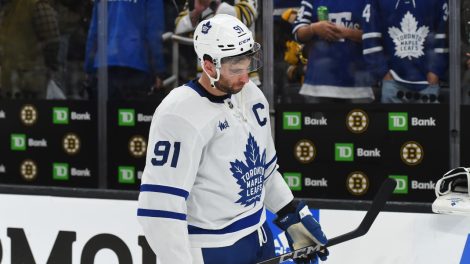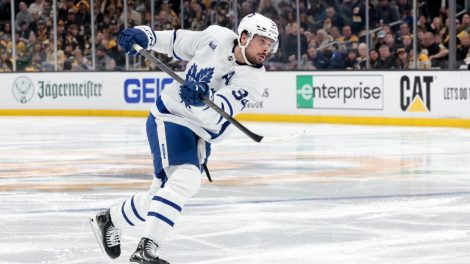This picture of Gordie Howe has been going around since his death. People often talk about his elbows but forget to mention the Popeye-like arms they’re attached to.
This is a pic of Gordie Howe fishing. Safe to assume he's reeling in a great white shark. What a legend. #MrHockey pic.twitter.com/27F30fl3IM
— Mike Johnston (@MikeyJ_MMA) June 10, 2016
Gordie Howe was a giant. His numbers were giant. His accomplishments were giant. And the respect and love being shown for him following his passing have been giant. Also, at six feet and 205 pounds, Mr. Hockey was a giant.
What? You don’t think six feet is that tall, or 205 pounds is that big for an NHL player?
Let’s travel back in time to the 1950-51 season. Howe is 22 years old and has earned his first Art Ross Trophy as the NHL’s leading scorer with 43 goals, 43 assists and 86 points in 70 games. The NHL’s second-leading scorer that season, Maurice “Rocket” Richard, scored 20 fewer points with 66.
But how did Mr. Hockey look, physically, compared to his competition around the league?
Big.
There were 173 players who played in at least one game for one of the NHL’s six teams in the 1950-51 season, not including goalies. Do you know how many of them were 200 pounds or more?
Ten.
That’s right, just five per cent of the league was 200 pounds or more in 1950-51, and at 205, Howe was tied for the third-heaviest player in the NHL. Toronto Maple Leafs winger Harry Watson was the second-heaviest player that season at 207 pounds and 210-pound New York Rangers centre Bill Kyle, who only played in three career NHL games, was the biggest player in the league.
(The Boston Bruins didn’t have a single player over 195 pounds, if you can believe it.)
To give you another perspective of how big Howe was back in the day, 69 of the league’s 173 players that season — just shy of 40 per cent of the league — were 170 pounds or less. That means Howe had a weight advantage of 35 or more pounds on about 40 per cent of the league that year.
Size certainly isn’t the be-all and end-all of success in hockey. Howe’s teammate Ted Lindsay, a hockey legend in his own right, was just 5-foot-8 and 163 pounds. Size wasn’t necessarily the catalyst of Howe’s success but it’s hard to deny that his performance in 1950-51 was a sign that he was of a new breed.
That very same season, the Montreal Canadiens had a 19-year-old who was one of the NHL’s 200-plus pound players, and at 6-foot-3, he was also the league’s second-tallest. His name was Jean Beliveau.
Out of the league’s 200-plus pound players in 1950-51, four of them are in the Hockey Hall of Fame: Howe, Beliveau, Butch Bouchard, and Harry Watson.
Ironically, today’s NHL is trending smaller. Stories like Johnny Gaudreau‘s are becoming more and more common as the league leans toward more speed and skill. While this is true, it comes after literally decades of increased growth.
Consider this: Leafs defender Morgan Rielly is listed at 217 pounds. He would’ve been the NHL’s heaviest player in 1950-51 by a full seven pounds. He can also jump five feet in the air.
Zdeno Chara was NHL’s tallest player this past season at six-foot-nine. Dustin Byfuglien was the NHL’s heaviest player at 260 pounds, tied with Jamie Oleksiak and all-star legend John Scott, of course. One player in 1950-51 was 210-pounds. This past season there were 279, not including goalies. If you count goalies, there were 306.
You’ve probably heard someone say something like “Alex Ovechkin would have dominated the NHL back in the day.”
Heck, that someone might have been me. While I think there is some truth to that, you have to look at players in the context of the era they played in. Gordie Howe’s emergence in the NHL changed the face of what a great hockey player was. The man was literally called Mr. Hockey.
The funny thing about the “era” Howe played in was that he played in several. His NHL debut was in the fall of 1946, about a year after the end of World War II, and he didn’t stop playing until 1980. During his career there were six different Canadian prime ministers and seven American presidents. You don’t pull off a career like that just because you’re big.
If you’re old enough to have seen him play, then consider yourself lucky. If you’re too young, like me, this is a great time to learn just who Mr. Hockey really was.












